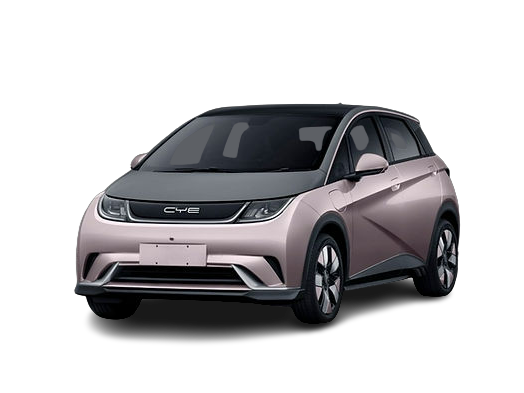![Cars from 2022 that made us go,]()
The Philippines is one of the very few countries in Southeast Asia where the concentration of supercars is insanely high. Still, not everyone can afford the fancy exotic cars you see in Interesting Car Spotting PH. So, why not look at some new and attainable vehicles that have graced our market? After all, the Chiron isn’t practical as a daily driver, wouldn’t you agree?
Toyota Raize
![Cars from 2022 that made us go,]()
The Toyota Raize is someone’s vague idea of what a turbocharged, Wigo-based SUV should be – the idea of off-road ability, but not so much the capability. As an Urban SUV, it fits the bill magnificently, offering SUV styling without the bulk and ungainly proportions.
![Cars from 2022 that made us go,]()
Launched in February of 2022, the Raize enjoyed much success due to the burgeoning SUV market and, as cliche as it sounds, Toyota’s reliability reputation. I suppose what Toyota didn’t expect to see would be a niche of owners taking this unassuming urban cruiser into the Overlanding scene and seeing unexpected success, no less.
![Cars from 2022 that made us go,]()
Thanks to the 1.0-liter turbo and the 1.2-liter N/A inline-3 engines, the Raize has been known to get 10 kilometers per liter in the city and up to 25 on the highway – do note, however, that the turbo will consume more, no thanks to the CVT having to keep both engines at high revs the whole time.
Still, it’s an excellent choice for people who want an SUV but rarely go off the beaten path.
Toyota Avanza/Veloz
![Cars from 2022 that made us go,]()
For the family man, the Toyota Avanza has been a mainstay since the early 2000s in the Asian MPV market. It has been offering buyers who would otherwise have bought the larger, diesel-powered Innova a smaller, gasoline-powered alternative.
At the same time, the Avanza gains an additional 1.3-liter 1NR-VE inline-4 mated to the CVT or manual transmission. Targeted at taxi fleets and families, the Avanza is one of the most spacious MPVs in the segment.
![Cars from 2022 that made us go,]()
Now in its third generation, Toyota has spawned a more comfortable, front-wheel drive Avanza based on the same platform as the Raize and a more upscale version that has been morphed into its own model, the Veloz.
![Cars from 2022 that made us go,]()
Launched within a month of each other, the Veloz is powered by Toyota’s 1.5-liter 2NR-VE inline-4 engine and mated only to a CVT. The Veloz sits in a class all on its own, combining the spaciousness of the Avanza with a heightened level of luxury for those looking for a more comfortable ride.
Could this replace the Vios as the most popular car in the Philippines?
Toyota Liteace
![Cars from 2022 that made us go,]()
If you thought Toyota was overlooking the commercial vehicle market, think again. The Liteace makes its triumphant comeback to the country this 2022. But instead of being a family van, Toyota has positioned it to take on light commercial vehicles, a market segment dominated by Tata and Suzuki.
On the face of it, the Liteace is properly poised to sway fleet buyers to it, thanks to its 1.5-liter 2NR-VE inline-4 engine and a wide array of body styles for the budding entrepreneur.
Features are virtually nonexistent in the Liteace, though they come with a radio and air conditioning, the two essential features most fleet vehicles need.
The bad news about the Liteace is that the price for this barebones commercial vehicle is ₱600,000 to ₱727,000, which is a large amount of money to pay for a single unit, let alone for an entire fleet to run a business. The price makes it the second most expensive in this category. Is it worth it? Perhaps.
Geely Emgrand
![Cars from 2022 that made us go,]()
Being the only sedan on this list, the Geely Emgrand is Geely’s answer to the Toyota Vios. And because it’s priced between ₱753,000 and ₱999,000, it’s definitely cheap enough to give the Vios a run for its money. Hehe, get it?
Dad jokes aside, the Geely Emgrand is quite a contender, sporting various features and a potent 1.5-liter engine mated to a CVT. It’s not the most powerful sedan in the segment, but it does pretty well for itself, regardless.
![Cars from 2022 that made us go,]()
Only time will tell if Geely’s decision was right, but this handsome vehicle is a welcome addition to the options list for sedan buyers.
Honda HR-V
![Cars from 2022 that made us go,]()
The HR-V from Honda is a far cry from the original, boxy HR-V of the late 90s, but that’s not a bad thing because the new one launched this year is a handsome crossover that wouldn’t look out of place at a fashion show, let alone the parking lots of Metro Manila.
The HR-V is powered by a frugal 1.5-liter turbo engine and mated to a CVT for maximum fuel economy and power, which is one of the reasons we at Autofun think it’s an important car for the Philippines today.
Priced to compete at ₱1,250,000 to ₱1,379,000, the HR-V and the mild hybrid version it precludes give insight into the future of the Philippine motoring landscape.
Nissan Kicks e-POWER
![Cars from 2022 that made us go,]()
If the future of motoring in the Philippines is electric, then the Nissan Kicks e-POWER is the link. Powered by an electric motor with a battery charged by a gasoline-powered 1.2-liter engine, the Kicks e-POWER gives drivers the immediacy of an electric car but removes the range anxiety typically found in Battery Electric Vehicles.
Inside, you’ll find the Kicks to be a tad on the mundane side, but that’s an advantage for it because it feels familiar. It’s not attempting to be hip for the masses but simply trying to make a hybrid as affordable as possible, and at ₱1,224,000 to ₱1,539,000, it does just that.
![Cars from 2022 that made us go,]()
Hopefully, Nissan and other manufacturers will take the hint that Filipinos are ready for hybrids and EVs, and the affordable offerings will start making their way here soon.
BYD Dolphin
![Cars from 2022 that made us go,]()
The BYD Dolphin is, to date, the cheapest fully electric vehicle "officially" on the market right now, even if it’s priced ₱1,888,000.
Powered by a 95 PS electric motor that produces 180 Newton-meters of torque, the Dolphin isn’t going to win any speed awards. Still, it can go quite a distance between charges – an estimated 405 kilometers of it. While the Kicks tried very hard to disguise the fact it was electric, BYD made it clear that the Dolphin would stick out.
And perhaps that’s a good thing, seeing as individualism is something of a requirement in this day and age. Who knows? If people overcome their fear of a Chinese-made vehicle, the Dolphin might be a worthy contender for the next family car for many families to come.
Are any of these cars on your shortlist for 2023?



















